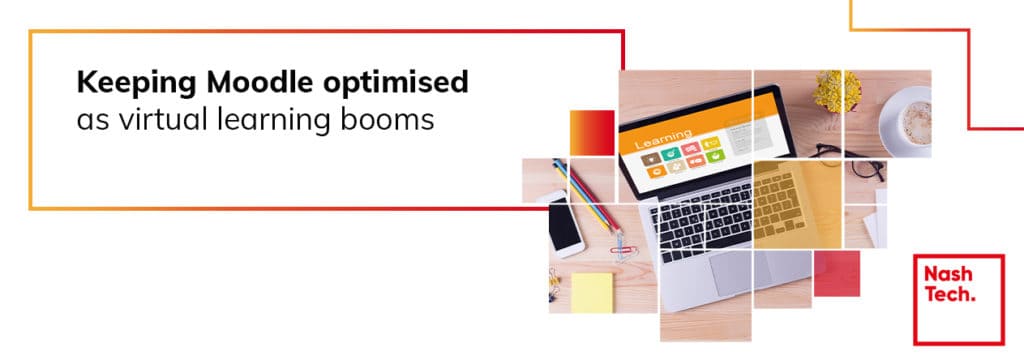Home / Our thinking / Insights / Exploring use cases of AI in higher education,
Exploring use cases of AI in higher education,

Table of contents
How is artificial intelligence transforming higher education and how can institutions capitalise on its impressive technology for enhanced student experience and operational efficiency?
Summary highlight
Are you on the fence when it comes to AI utilisation in higher education? Do you understand its capabilities and how it can help to elevate your institution above others? In this article, our experts explore example use cases of AI in higher education for enhancing student experience, institutional efficiency and day-to-day operations.
Artificial intelligence is disrupting the education sector
The education sector is on the precipice of substantial change. Powerful technologies such as artificial intelligence have thrown a spanner in the system, forcing educators to re-evaluate their role and effectiveness in the classroom. Over the next several years, we can expect to see the rate of AI adoption in higher education increase as universities seek out innovative ways to overcome their most pressing challenges: student and faculty retention, satisfaction and delivering quality learning for improved student outcomes.
Global Market Insights predicts that the AI education market could have a value of $20 billion by 2027. Yet, despite its promising outlook, universities are slow to identify its relevant use cases and, for some, there is still uncertainty as to how and whether AI should be implemented at all.
For our experts, AI is a no brainer for enhancing the quality of education and provides opportunities for personalised learning, rapid student support and revitalisation of administrative processes.
Let's take a closer look at example use cases of AI in higher education.
Reimagining the student experience
AI is a golden ticket for universities looking to reimagine the student education journey. The fallout of the pandemic and increase in accessibility of online-only courses led to universities observing volatility in the number of student applications. A top priority for universities today, student experience is critical for attracting new and high-performing students in an increasingly competitive market. But that's not all, it also plays a significant role in retaining and engaging students throughout the entirety of their educational lifecycle (a trend that universities are observing today).
There are a number of ways that AI can enable universities to enhance their student experience, including delivering personalised learning experiences and engaging learning environments as well as providing 24/7 student support services.
1. Delivering personalisation in learning
Given its massive popularity in 2023, it's no surprise that generative AI has piqued the interest of the education sector. A question we often hear our clients ask is, 'how is generative AI in higher education going to impact student learning and teaching processes?'. One way is by delivering an outlet for personalised learning. Combining generative AI models with advanced data analytics platforms, institutions can analyse student performance against a variety of behavioural factors, including teaching styles, speeds, class types and specific learning environments. Thus, unlocking a new level of customisation where learning materials, collaterals and study schedules can be developed in line with a student's unique characteristics - improving outcomes and performance overall.
Additionally, generative AI can create bespoke quizzes and tests for students based on their current level of understanding and achievements to identify strengths and weaknesses when preparing for assessments.
2. Creating interactive learning environments
The education sector is known for its constant scrutiny concerning the best methods of delivering teaching practices. A key theme that educators are focussing on today is how to make learning more engaging and interactive for their students. Universities are experimenting with AI to create learning environments that go beyond the traditional book-to-paper and examination process. Testing of AI-powered gamification and immersive experiences for example are currently underway to aid in understanding of more complex concepts and provide an element of visualisation to learning. For example, immersive virtual surgical fields for medical students. This new method of teaching encourages students to take a more active role in their learning, while making lectures more exciting and engaging.
But how can universities measure student engagement to begin with? Where virtual classes have gained popularity, accuracy in measuring and monitoring of student engagement has become a challenge. In the more traditional in-person educational setting, lecturers were able to easily assess the facial expressions and body language of their students and adjust teaching styles accordingly. For example, lecturers could re-explain concepts to students if they displayed affective states like confusion. AI is a tool that can aid in identifying student engagement during virtual classes. Using face detection, it can accurately and objectively analyse micro-facial expressions and behaviours of students on camera, such as eyebrows raising and yawning, to provide data insights into the effectiveness of a class or interest in a topic.
Find out more about how technology can measure student engagement: https://www.nashtechglobal.com/our-thinking/insights/nashtech-eacademy-platform/
3. Scaling student support services
Providing instant and around-the-clock support is integral for improving student satisfaction, particularly around peak examination seasons where students are more likely to raise questions outside of staff operating hours. AI powered chatbots are an efficient and cost-effective method of providing tailored support on-demand without the long wait times. According to The Journal, AI-powered chatbots can respond to a student's request in as little as 2.7 seconds. NashTech's multi-lingual intelligent chatbot, BonBon for example, can provide 24/7 availability on university websites, leveraging intelligent search and university data to find the most relevant answer to student queries.
Staff faculty alike can also benefit from AI-powered chatbots. Admission and customer service teams can save copious amounts of time responding to parent and student queries and this is especially useful during high influx application periods.
4. Student mental health services and wellbeing
A more recent concept is the use of generative AI in higher education for providing intelligent wellbeing services to students. Generative AI powered chatbots, such as NashTech's BonBon, can harness its Large Language Model (LLM) capability to converse with its students, understanding tones and cues from its conversations and using contextual understanding to guide them towards the relevant help resources and guides. Although universities may wonder if it's wise to handover human-sensitive topics like wellbeing to robots, research is revealing that students today feel more comfortable discussing mental health related issues with non-human entities rather than their human counterparts.
Find out more about NashTech's intelligent chatbot BonBon: Introducing BonBon - NashTech (nashtechglobal.com)

AI for driving internal efficiencies
AI in higher education not only provides new avenues for improving the student experience but enables organisations to drive internal efficiency and productivity. Cumbersome processes such as student recruitment, enrolment and document processing can be streamlined through applied AI, saving educators time and reducing workloads across administration teams.
Automating administrative tasks and streamlining recruitment
Every year administration teams begrudgingly await the tens-to-thousands of student applications that are soon to land on their desks. According to Statista, there were 767,000 applications for universities in the UK alone for 2022. Rather than sifting through endless applications and personal statements on a one-by-one basis, AI together with automation technologies can fast-track the process by analysing applications and scoring them for shortlisting. Thus, freeing up time, driving efficiency in application processes and increasing satisfaction of staff due to reduced workloads. Other institutions are even exploring its potential for managing finances and identifying areas where cost-cutting measures can take place.
Learn more about how AI can help to automate the admissions process in our article: https://www.nashtechglobal.com/our-thinking/insights/automating-the-admissions-process/
Reforming assessment and examinations
A significant challenge for institutions is the delay in providing personalised and detailed feedback to its students for better performance - a contributor to poor student satisfaction. The increase in the total student population has only exacerbated this problem as lecturers are bootstrapped for time, struggling to balance teaching with creating effective lesson plans and marking assessments. Generative AI can reform the student assessment process by delivering feedback on assessments in real-time and flagging areas of struggle for students to create tailored learning materials.
Driving higher education with NashTech's AI
There's no doubt that we will see the adoption of AI in higher education skyrocket over the next several years. According to Soocial, 86% of educators state that technology, including AI, is a vital component for revitalising the education system.
At NashTech, we can help you to identify the right AI use cases for your institution and develop custom AI solutions to meet student expectations, drive operational efficiencies and save costs in the long-run.
Suggested articles

Can technology save the international student crisis in Australia?
2018, Australia attracted almost 700,000 international students to its universities, making Australia, the United States, and the United Kingdom, the...

Higher Education Technology Solutions in a Post-Pandemic World
The technology race to reshape the University and College student experience The student experience at colleges and universities has changed beyond...

Keeping Moodle optimised as virtual learning booms
The Covid-19 pandemic has hugely accelerated the growth of virtual learning, with higher education campuses up and down the country largely empty and...